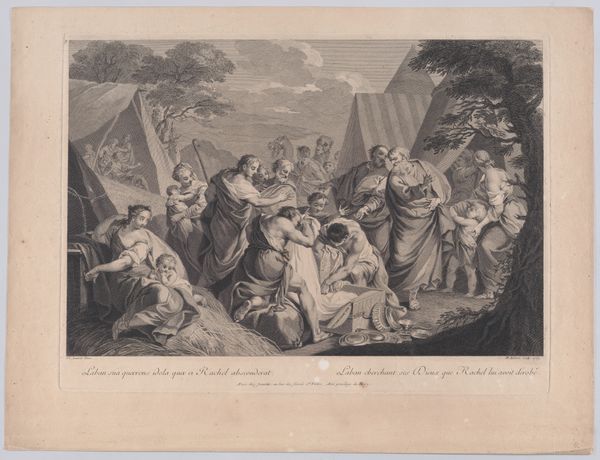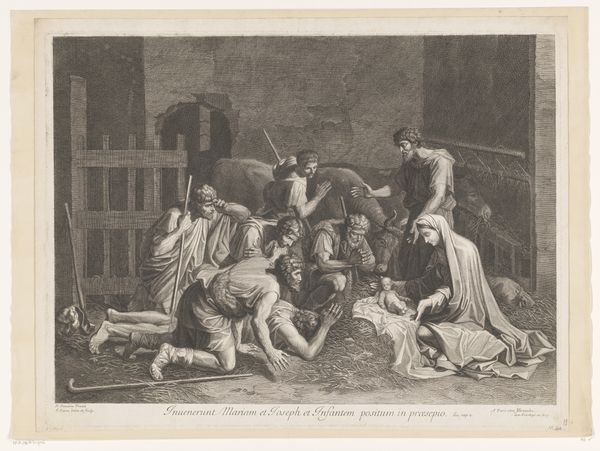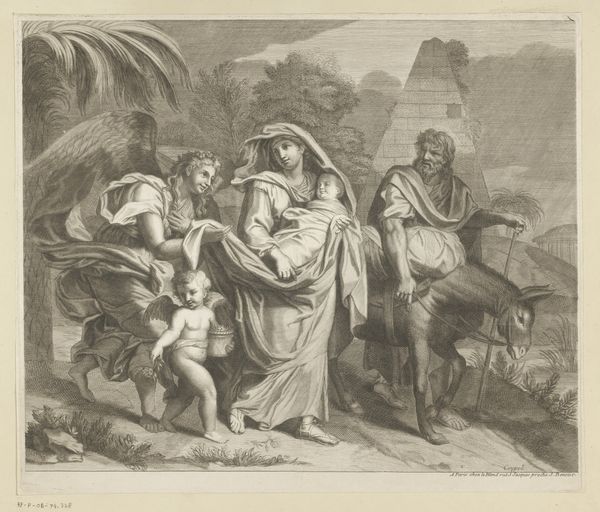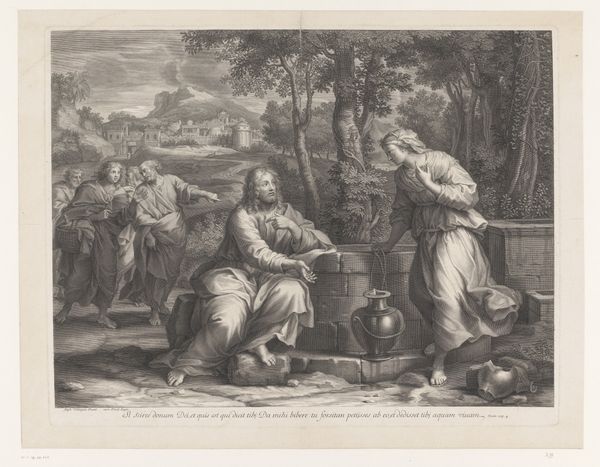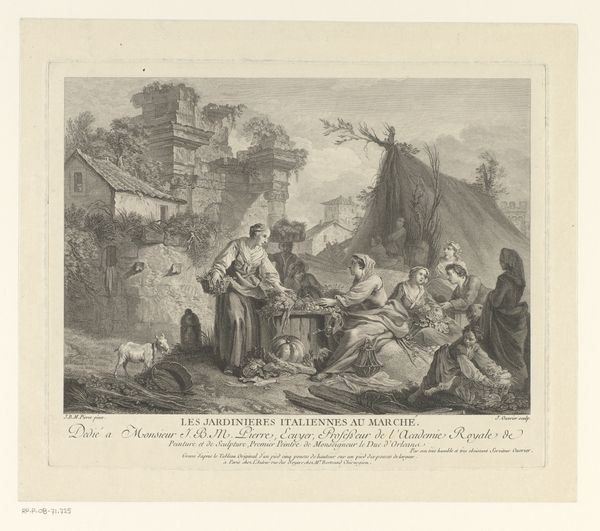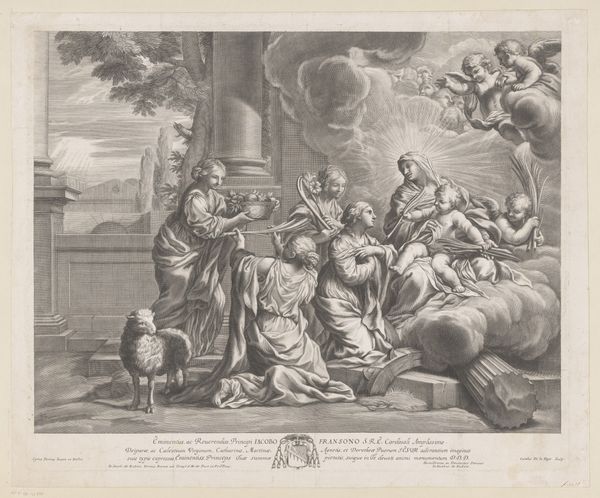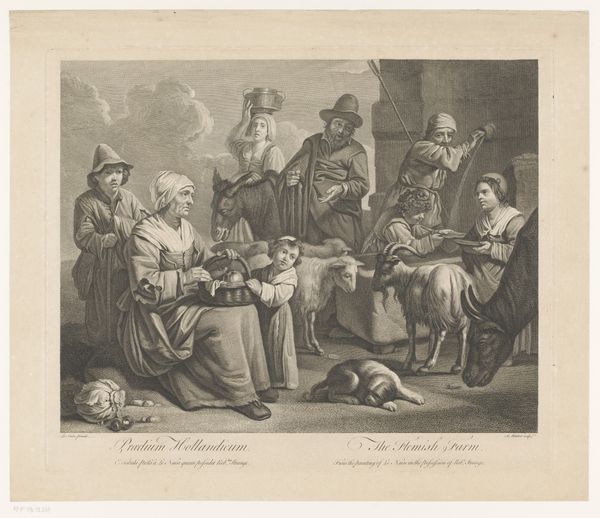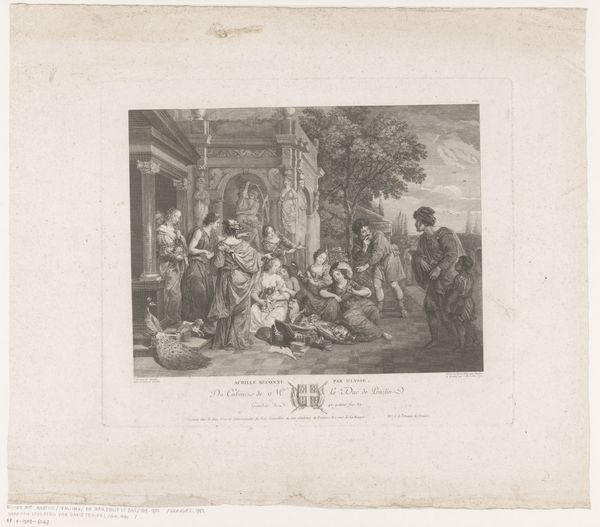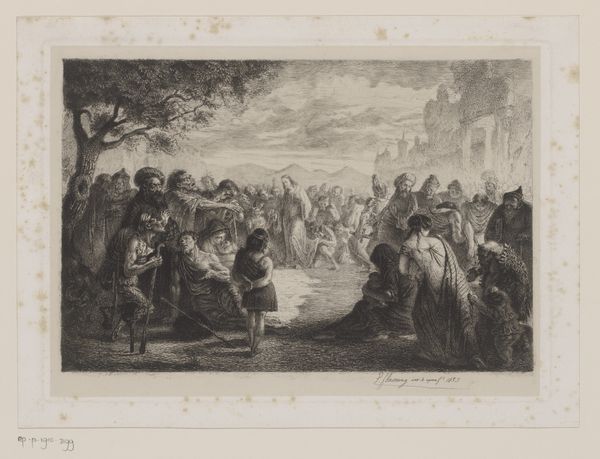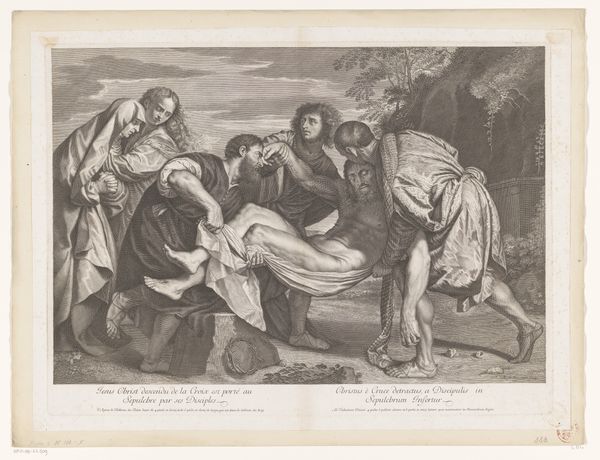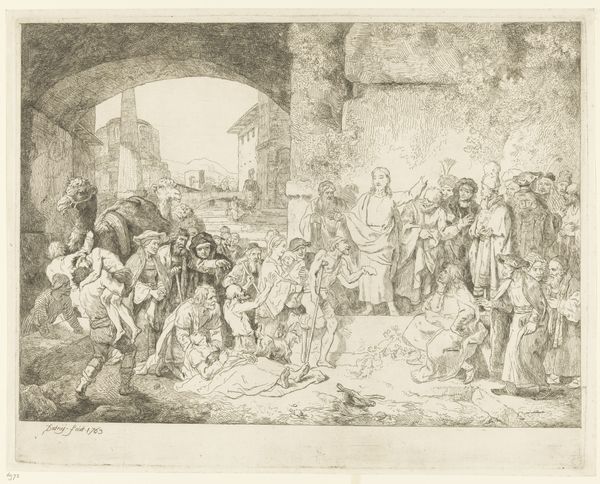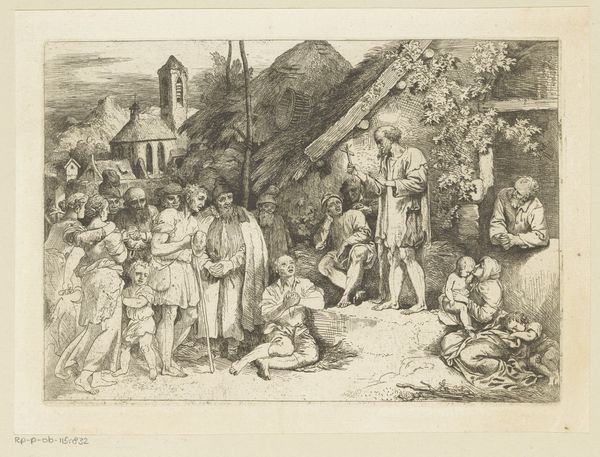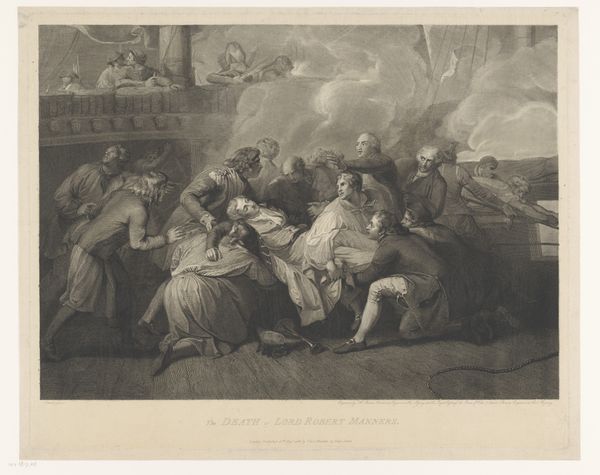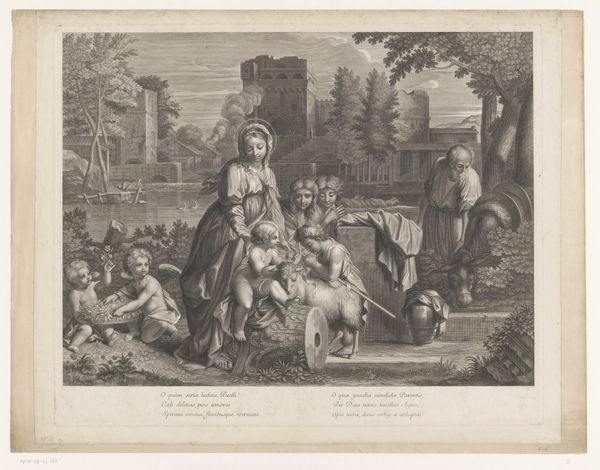
Heilige Familie met Anna, Johannes de Doper en engelen 1650 - 1693
0:00
0:00
engraving
#
baroque
#
old engraving style
#
landscape
#
figuration
#
line
#
history-painting
#
engraving
Dimensions: height 450 mm, width 545 mm
Copyright: Rijks Museum: Open Domain
Editor: Here we have "The Holy Family with Anna, John the Baptist and Angels" by Elias Hainzelmann, created between 1650 and 1693. It’s an engraving with such incredible detail! I'm immediately struck by how serene and staged it feels, despite the landscape in the background. How do you interpret this work? Curator: What I find particularly compelling is how Hainzelmann situates this biblical scene within a complex social and political context. While it ostensibly depicts familial piety, we need to question what that ideal represents and who it excludes. Editor: Could you elaborate on that a little more? Curator: Well, think about the power structures at play during the Baroque period. Images of the Holy Family, particularly with that European aesthetic, served to reinforce the authority of the church and the state and even legitimized hierarchies based on gender and class. The angelic figures attending to Mary also signal how women can be elevated but only via religious vocation. Editor: That's a fascinating perspective! I was so focused on the composition and the figures that I hadn’t considered that deeper meaning. Curator: Consider the figures in the background – laborers in what appears to be service to the Holy Family and their tranquil respite. Who is given leisure? What bodies perform what tasks? By including the everyday, Hainzelmann quietly shows the broader world outside that singular narrative of sanctity. Does this prompt a different read? Editor: Absolutely. I see now that it’s not just a peaceful religious scene, but also a representation of power and societal norms of the time, and how faith, even then, was deeply connected with societal structures. Thanks! Curator: It’s vital to recognize the multi-layered complexities behind art – its creation, its reception and continued visibility. I find it always enriches how we approach these older works.
Comments
No comments
Be the first to comment and join the conversation on the ultimate creative platform.
